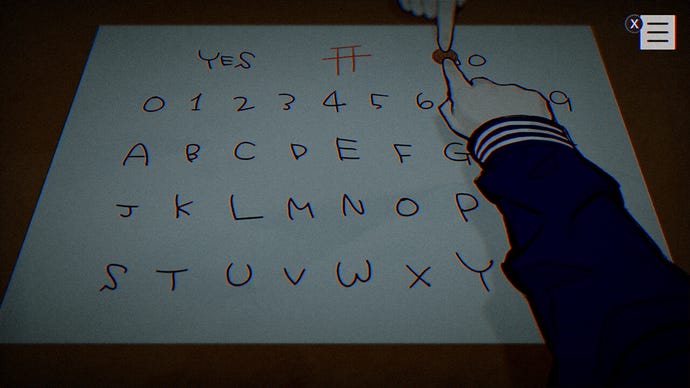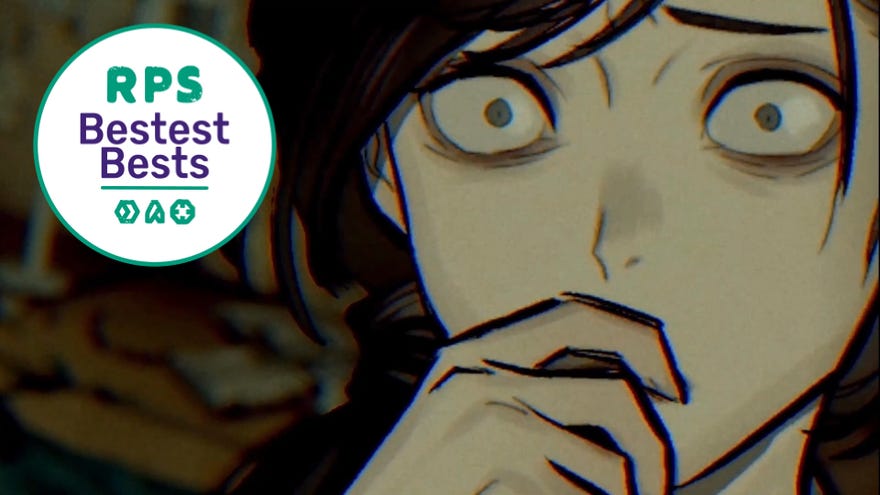Paranormasight: The Seven Mysteries Of Honjo review: a hair-raising and subversive horror visual novel
One of the biggest surprises of the year
Heed my words, dear reader: Paranormasight: The Seven Mysteries of Honjo is best played if you go in knowing nothing about it. Zilch, zero, nada. Its twists and turns from the get-go have my brain doing mental gymnastics, not just in the game but in trying to figure out how to write around them for this review. I’m not going to spoil everything, but keeping your expectations completley wide open lets Paranormasight snake right on in and surprise you when you least expect it to.
Here’s a quick elevator pitch: Paranormasight is a Squeenix-developed horror mystery visual novel about deadly rituals, ghost stories, curses, and the occult. Its subversive approach to classic visual novel staples make its puzzles feel smart and its horror scares hit hard. If you’re a fan of the thrills found in the Danganronpa and Zero Escape games, Paranormasight is like a bite-sized version of those two behemoths. It’s short, smart, and will keep you on your toes until the end.
So yeah, if that sounds like your thing, then have at it. From here on in, I'm going to be gabbing abut it in-depth.
Alongside being a front runner for ‘worse name in videogame history,’ I’m bestowing Paranormasight the gold for being one of the year’s best surprises. Revealed during the last Nintendo Direct livestream - but only in the Japanese version of the show - there was a worrying moment where it seemed like it would be a Japan-only release. But thankfully not, because, put simply, Paranormasight is brilliant.
What starts out as a casual hunt for a local ghost in the game's opening 15 minutes spirals into a sprawling mystery with roots that have been buried in the ground for hundreds and hundreds of years. Paranormasight takes place in 1980s Honjo, a supernatural hub thanks to a group of ghastly and gruesome urban legends from the Edo period called The Seven Mysteries of Honjo. One night, a bunch of powerful Curse Stones start mysteriously appearing, granting the owner use of their deadly curses, each related to one of the seven mysteries. Not only that, but the bearer of a Curse Stone also has the ability to bring someone back from the dead using a ritual called the Rite Of Resurrection. Dredging up someone’s soul isn’t a freebie, though. The Stone-bearer needs to collect enough Soul Dregs to activate the rite - which they get by killing people. Oh dear.
.jpg?width=690&quality=80&format=jpg&auto=webp)
Caught in this web of killings and deadly curses are Paranormasight’s cast of characters: two detectives investigating a series of murders, an average Joe office worker and his occult-loving friend, a highschooler and her psychic classmate seeking the truth behind their friend’s suicide, and a mother looking for revenge for son’s death with the help of a private investigator. You play as each character separately, hopping between their timelines during different parts of the story. Each person is in some way entangled in the wider mystery of the Curse Stones, and their timelines interweave as the mystery unfolds.
_ztdw6KB.jpg?width=690&quality=80&format=jpg&auto=webp)
There's a lot of talk of folktales, rituals, newspaper articles, historical documents, important people, Japanese history, and much, much more. Thankfully Paranormasight has an amazing file system that you can access at any time - grouped into "Persons of Interest", "Culture and Society", "Phenomena/Curses" and so on. It was a life saver during my playthrough (often literally).
I love this set up. I’m a big fan of having multiple parties in mystery games finding out different snippets of information for you, the sort of overseer, to piece together. It builds a kind of suspense that you don’t get with playing as a single character who hoovers up all the information on their own. Connecting details from these different story routes gives you an omnipresent knowledge of things the characters are unaware of, which is such a great thrill and it's something that Paranormasight loves to relish. The pacing is great too; over 10+ hours it didn’t feel like there was a dip in the game’s tempo, even when switching between story routes.
The game’s core mystery - the Curse Stones, the ritual, where they came from, and potentially how to stop them - unfolds as you click on objects in the scene and pick dialogue options. You’ll often get a choice of answers, some of which lead to the same outcome (booo!) but will often cause a schism in the timeline, leading to different events. Investigating a city in the hopes of desperately bringing a loved one back from the dead, while people could be on a killing spree, makes for some, you know, uneasy encounters. There are numerous standoffs where you need to navigate a conversation safely, or (if things go south) quickly use your Curse Stone before an opponent uses theirs, a quick-fire kill-or-be-killed situation.
.jpg?width=690&quality=80&format=jpg&auto=webp)

If you do end up biting the dust, you can always start from earlier in the timeline after a quick chat with the elusive Storyteller, a masked man who acts as your fourth-wall-breaking guide - think of The Curator from The Dark Pictures Anthology. This dapper trickster will give you hints to avoid the same outcome, getting more specific each time you meet an unfortunate end. This keeps events moving along nicely as Paranormasight’s puzzles can sometimes get obtuse. There was only one occasion where I was properly stumped, but it’s an easily forgivable offense in a game that's actively trying to think outside the box. The majority of puzzles are clever twists that kept me constantly surprised. Ach, I wanna talk about it more, but that really would be wading into spoiler territory.
One game feature I will touch upon briefly is Paranormasight’s 360-degree character viewpoint, which seriously elevates the game’s horror elements. Some visual novels only move the character’s usually-static perspective a little bit, but Paranorasight lets you look all around a scene, and wow, it’s absolutely perfect for ghostie-ghoulie scares. You always feel like something is lurking just off-screen, or - a Paranormasight favourite - directly behind you. It’s sooooo creepy.
The artwork also adds to the horror, as characters are incredibly expressive, especially when they look shocked or scared. And when the onomious choral choir, screeching violins and creepy piano keys start to escalate, that’s when you might wanna pause, tab out, and press play on that cute puppy compilation video you have waiting in the wings (a legit tactic I use when playing horror games).
.jpg?width=690&quality=80&format=jpg&auto=webp)
For the most part, Paranormasight’s fusing of real Japanese history, the supernatural, and complex character drama makes for a brilliant story, but there is one bit that feels weird to overlook - namely a subplot involving the blackmail and sexual assault of a high schooler. It’s not directly part of the story and is only talked about as second-hand information, but yeesh Squeenix, I could really have done without that. I kind of saw it coming, and it handles the subject better than other similar games, but it's still a tired trope of the genre I was hoping Paranormasight would avoid. It’s one uncomfortable footnote in what is a brilliant game, but yeah, it was the only thing that made me pause for a second before slapping on the coveted RPS Bestest Best sticker.
Minor puzzle misses and yucky subplots aside, Paranormasight: The Seven Mysteries of Honjois is this year’s first major surprise. It really keeps you hooked until the end with its smart and subversive approach to horror visual novels, and its antholgy of ghost tales will give you major chills. A potential cult classic, for sure. Here’s hoping it gets the attention it deserves.










